Contemporary Paintings > In 2020, Cynthia Rosen found time to experiment with her colorful abstractions of the landscape, and moved toward something many of us can relate to from the year: the still life. Here’s how and why her art has changed, and the relevance of a common, but unexpected, shape in her paintings.
Contemporary Paintings: When Time Stands Still
BY CYNTHIA ROSEN
cynthiarosenartist.com
Forty years ago, I moved to Vermont to surround myself with the beauty of the great outdoors. I raised my family here and taught here; and for some years since, have sojourned in Massachusetts, New York, and Arizona, all of which offer outdoor gifts. Recently I moved back to Vermont where I reside full time. I am once again finding celebration in the sights and am delighted with the constant change of passing seasons, but now, I have come back in a truly new way. I have returned as a painter, quite often enjoying painting outside.
For those who don’t know me, I am a palette knife painter. I love the brush, and occasionally use it, but I am smitten with the knife. I love the purity of thick paint color, which I apply in conjunction with quick definitive strokes. It is not necessarily a gentle process, nor are my paintings. Rather, they are imbued with a restless energy, in my mind, reflective of the world about me. My landscapes are flooded with bits of color moving across the surface, often correlated by others to be ‘a painters version of stained glass’. I typically use broken color in which colors sit alone as opposed to blending adjacent colors.
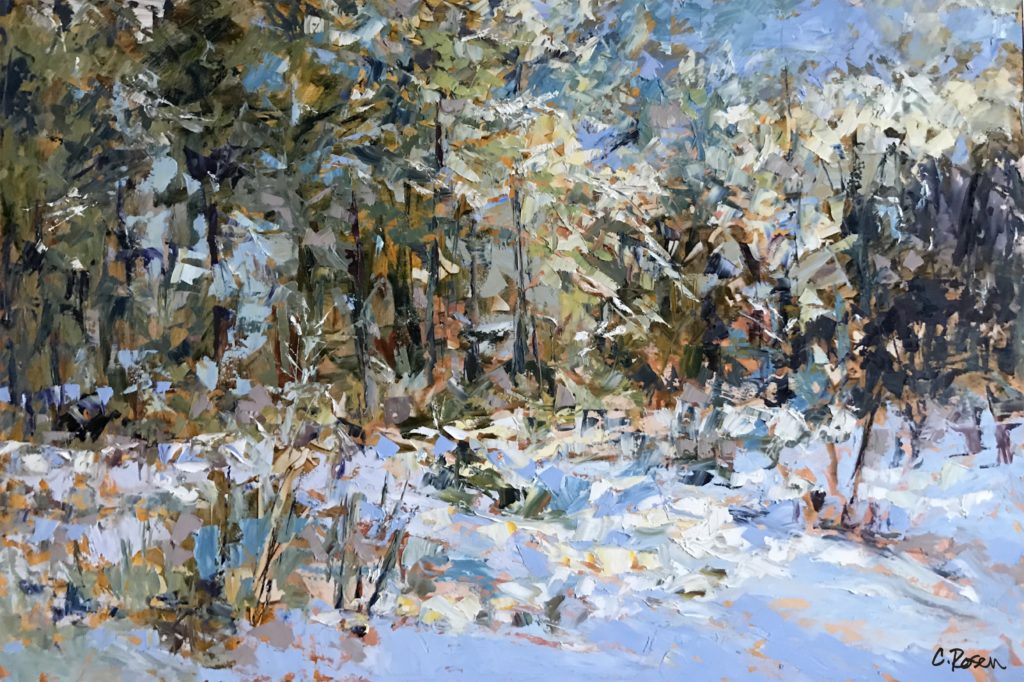
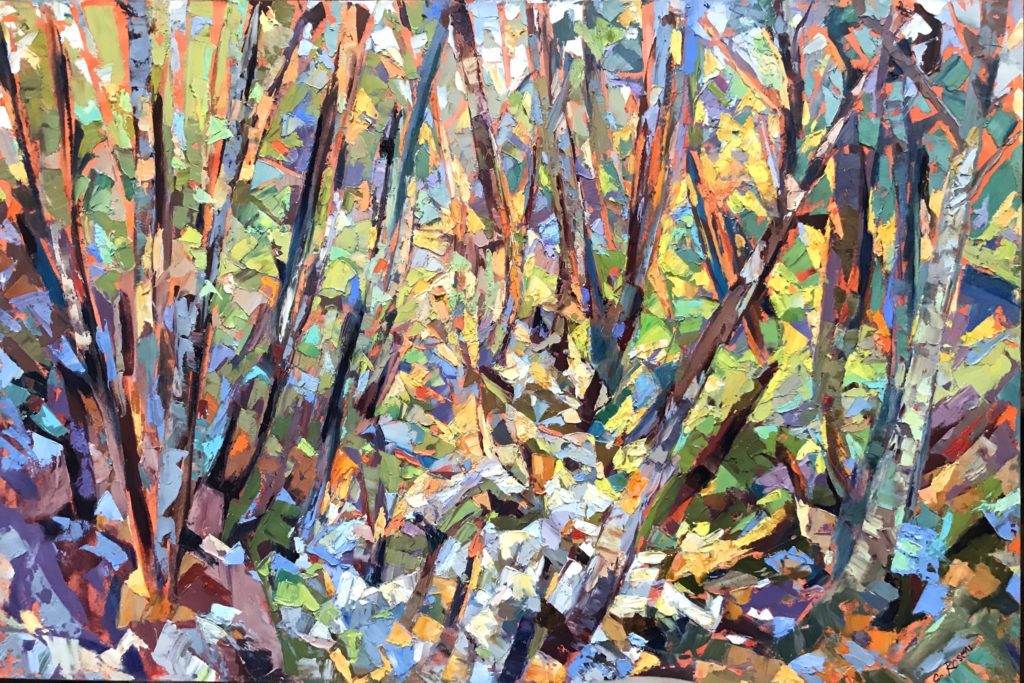
While some of my landscapes are seen as abstractions, I consider them merely interpreting the essence of what I am seeing. The immense range of colors about me, the constantly changing light, more drastic than that in less treed and flatter lands, the flutter of leaves in the breeze and a world merely specked with the occasional inorganic structure created by civilization. But this year, Covid-19 hit and our lives were significantly changed, as reflected by an added direction in my painting.

Travel plans were canceled, galleries shut down and/or closed, at least temporarily, the nature of gatherings was altered, and for days on end, it all seemed like life turned a bit upside-down (in addition to added social/political stresses). While some chose to maintain life as previously known as much as possible during the pandemic, my family and I chose to maneuver through these new times with an abundance of caution. This brought me to a time of experimentation.
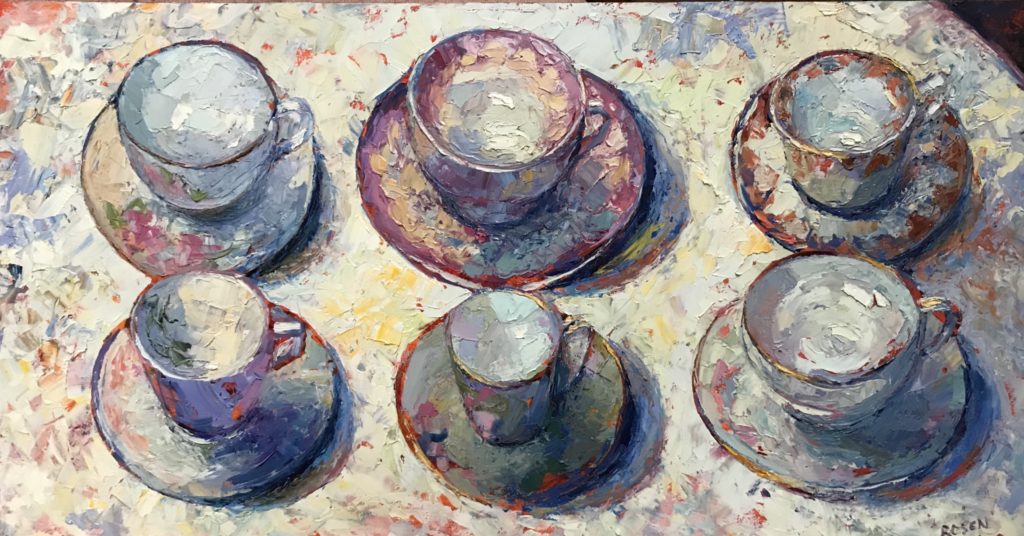
In an effort to learn how to paint, I have always ventured across boundaries of various medium and genres. And while most of my paintings have been landscapes in oil, I have enjoyed painting still lifes for the rare occasional change, particularly when hitting a streak of extreme weather. I chose not to endure the frigid temps while painting plein air. In doing so I realized there is something really nice and secure about in dealing with a still life. In fact, I painted a still life for an instructional video through Streamline Art Video. Is it a great painting? No, those don’t happen intentionally just because we have a desire or a few hours with which to produce. That would require working over a longer period of time. The quality of instruction is the intent of an instructional video.
A ‘Still Life’
Controlled light (if painted in a studio) and objects that don’t move! How nice is that? And my trusty palette knife, an old friend at this point, even for painting still lifes. (My favorite knife being the RGM #50 or other brand equivalent in shape, size, and flexibility, which does not hold too much paint, making it very controllable and an angled neck to keep my fingers out of the paint.)
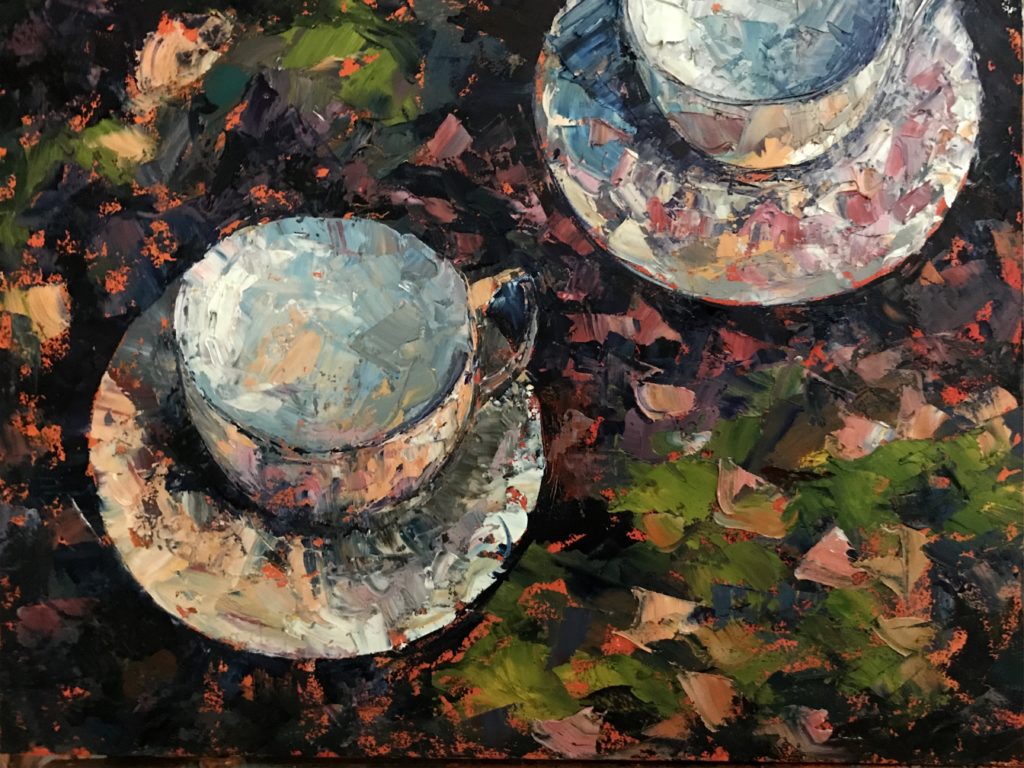
Stability in Shapes
But, interestingly enough, I have recently found myself drawn to painting circles. And, I attribute this to being stuck at home. Am I walking in circles? Is my mind going around and around, over details or thoughts? Actually I think it is the comfort a circle provides. A circle gently contains. Well, you say: ‘So does any geometric shape’. Yes…but a circle acts like a target and you can not get cornered into a section like you can with straight edged geometric shapes.
A square contains but due to its flat surface seems to ground one more. A triangle directs the eye like the tip of an arrow. A more organic shape, like an amoeba, is related but adds a sense of a fluid movement due to the uneven weight distribution. But a circle simply contains. I have rarely used circles in painting…until now. Yes, I have painted objects such as vases with the fullness they embody and the elliptical curvature of their base and/or top; but never painted circles as the focus of a painting, until now.

Excuse me for a moment as I will digress to tell you when my interest in circles and still lifes began. Upon learning art history in the 70’s, I remember loving the boldness of Wayne Thiebaud’s color, his clearly defined use of shapes, and at times, patterns, usually viewed from above. I simultaneously loved the gentleness of William Bailey’s tonal works, also with clearly defined shapes but from a frontal perspective with a virtual opposite kind of formal structure.
During this time, my own image making was either on the grey scale (somewhere between the extremes of black and white) or basically monochromatic (the variations of one color) without well defined shapes, for I had transitioned from tightly drawn images to the world of ‘Color Field’ painting (part of the Abstract Expressionist movement). I was creating primarily monochromatic modulating surfaces onto which I drew a movement of slightly colored marks reflecting the movement of time. Time…seems to be a subliminal obsession that can still be found in my work to date.

So jumping to today, thank you to Covid-19, age, and too many cold grey days for my liking, I have found myself spending part of my time painting still lifes. But, instead of the occasional endeavor, these paintings seem to be becoming part of a series, a series filled with circles. I am loving the control and containment that circles afford, in a time so out of our control.
Where will this fledgling series will take me? I am not sure. For now, circles are comforting and the stability of shapes are a wonderful alternative from my normally energetic mosaic-like strikes of color highlighting movement and change.
Has my technique changed? No, I am still a committed palette knife painter (for now) but I have found comfort in the more controlled shapes and structure that have found voice in my present vocabulary. Our journey in making art will always be an adventure spurred on by the curiosities of our hearts and mind.
About “Still Life with Palette Knife”
.
Cynthia Rosen’s “Still Life with Palette Knife” workshop is is perfect for artists who are screaming out for help or who have reached a point of frustration and want to find their own personal voice as they expand their skills.
Artists wishing to go beyond traditional approaches will absolutely LOVE this! Don’t shy away from this video just because you may never have used a palette knife — it’s SO much more than that.
This is a chance for you to bring new energy and drama to your paintings. Learn more about the art video workshop “Cynthia Rosen: Still Life with Palette Knife” here.
> Sign up to receive Fine Art Today, our free weekly e-newsletter
> Click here to subscribe to Fine Art Connoisseur magazine, so you never miss an issue

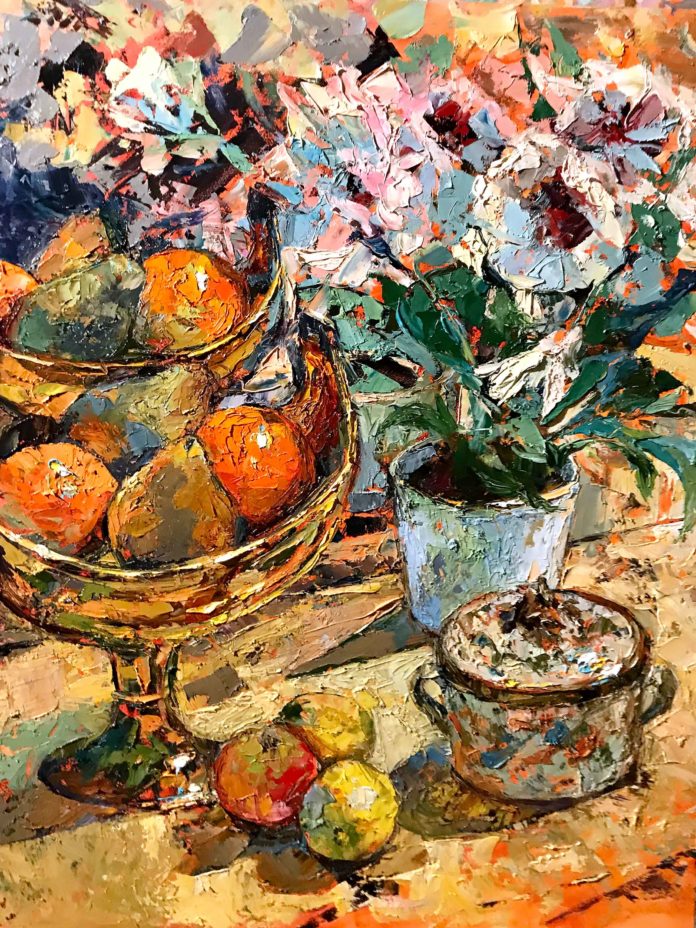







Great article and work, Cynthia!
Thank you so very much, Ellen!
Cynthia, Your paintings are gorgeous and prose perfect. Love your discussion of this circle development. Painting turns us into philosophers if we weren’t before. It’s such a natural extension of the rhythms of creating. Ideas and images. All the paintings are grand – with “Mirrored Image” being a favorite.
I think we should put together the mother of coffee table books with our reflections (prose and pictures) on this time. Our time capsule.
Jill, I am sorry to be so late in getting back to you. Thank you so so much. I have to smile at your summing it all up so concisely “Painting turns us into philosophers if we weren’t before”. You are so right that “it is such a natural extension of the rhythms of creating”.
And such a great idea to put together a coffee table book. :0) Thank you again.